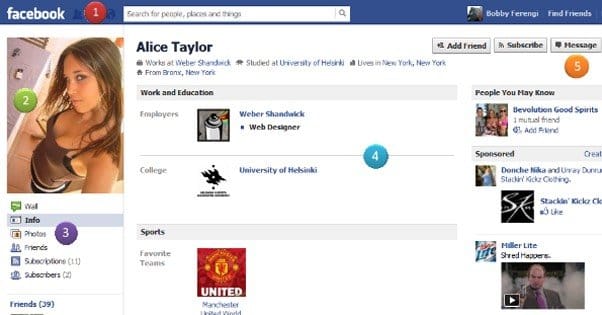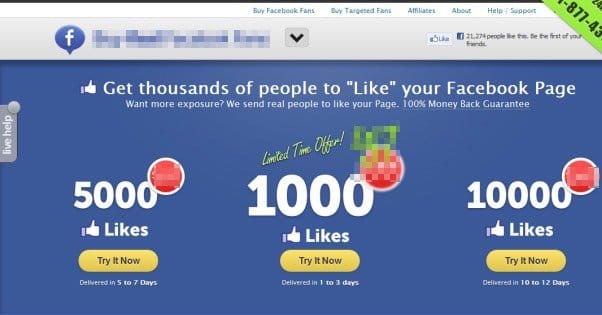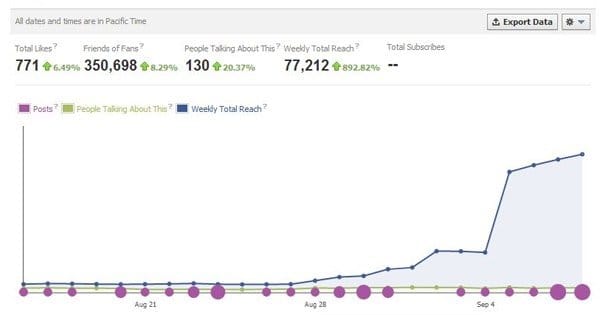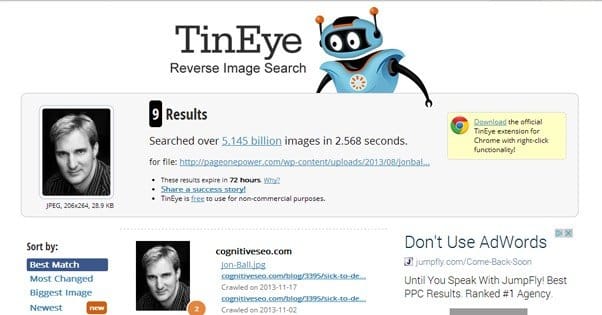 Written by ContentPowered.com
Written by ContentPowered.com
There are a lot of reasons why you might want to identify the fake followers of a Facebook page. You’ll note that I said identify, not find out if they exist. That’s because every Facebook page is going to have some fake users. It’s just a fact of marketing on Facebook these days.
Where do fake likes come from? Why do they exist? How can you spot them? To find that out, let’s start at the beginning.
Types of Fake Followers
If you’ve been following this blog for a while, you would know that we’ve established a few categories for fake followers when we discuss them. I do this primarily because there’s a blurred line between fake followers and just bad followers. There’s very little difference, functionally, between someone who followed you for a contest but doesn’t care about your posts any more, and someone whose account is managed by a robot. Neither one engages with your posts or cares about your brand, and neither one is going to click your links or buy your products. It’s just that one is easier to identify and remove.
Before we get into the categories, I just want to point out that Facebook has a fairly good handle on fake followers. There are a lot of them out there, sure, but the turnover rate is quite high. Facebook purges hundreds or thousands of fake accounts every day, and no one notices. Only when there’s a significant number removed from a specific page do you get the “We’ve removed some fake likes” notice.
The categories basically are divided based on the origin and purpose of the account.
- Bots. These accounts are created by bots and do essentially nothing but like pages. They have little to no information on them and are incredibly easy to spot. When Facebook notices 10,000 accounts all liking the same page in the span of a week, and they’ve seen those same 10,000 like 15 previous pages all in the same pattern, it’s very easy to tell that they’re all controlled by the same user. They likely came from a botnet of infected computers run by someone selling basic services out of some shady website based in the Ukraine.
- Clickfarm users. These accounts are created and run by real people, but they aren’t representative of real people. The people creating and running the accounts are populating them with fake information and using them just to like pages all day. Often, they will get paid for the some likes, and organically like pages from ads just to obfuscate their activity. It’s still not all that difficult for Facebook to identify these, simply because they tend to be from developing nations where $1 goes a long way, rather than a developed country that can’t sustain a lifestyle on a few dollars a week.
- Paid workers. These are essentially clickfarm workers, but they’re distributed around the world and are harder to identify because they’re typically real people. They’re just selling their likes for a few cents each through sites like Mechanical Turk or other penny worker sites, mixed up with their normal browsing.
- Disinterested users. These are just regular people who like your page for one reason or another, either on a whim, based on an old purchase, or for a contest. The ignore your posts, though, or might even unfollow you. These aren’t actually fake users or fake likes, but they’re not valuable to you at all, so it doesn’t hurt if you remove them in your purge.
There are additional sub-categories for each. For example, with bots, you might have bots designed just to like pages, or bots made to send spam messages or make spam posts, or bots designed to provide fake engagement. There are also some fake accounts made for impersonating others, but those don’t tend to be run by robots.
Why Fake Followers Exist
Fake followers don’t make you money when they like your page. They don’t click links, they don’t convert, they don’t share posts, and they don’t buy products. Facebook doesn’t approve of them and removes them when they’re spotted. So why do they exist?
The answer, of course, is money. As long as there are people out there willing to pay a Russian scammer $10 for 1,000 likes, there will be scammers with botnets selling those likes. Let’s face it; it’s trivially easy to set up a rotating proxy list to make fake email addresses and use those to sign up for fake Facebook accounts. With a bot, you can make hundreds per hour.
Since we can’t cut off the source, and it’s inefficient to filter every account as its made and hope to catch the fakes, the best we can do is try to educate all of you out there and get you to buy your likes from legitimate services, if at all. Only by removing demand can we stop the epidemic.
How You Get Fake Likes
Contrary to popular belief, fake likes are not solely the domain of like sellers. There are legitimate like sellers, like ourselves, who run ad campaigns with audiences you can’t normally reach. The likes you get there are perfectly valid, not fake.
By contrast, fake likes can come from anywhere. Bots can find a Facebook like box on your website and like you through it. Running Facebook ads will get you fake likes. Buying ultra-cheap likes will most likely get you fakes as well. Clickfarm workers are even encouraged to organically like pages just to further hide their coordinated activity.
If you do anything at all on Facebook, chances are you’re going to get some fake likes. It’s just a fact of life now. The best you can do is keep on top of it.
Identifying Fake Likes on Other Pages
There are a lot of ways to identify fake followers on Facebook. I’m starting out with the methods you can use to identify the presence of fake likes on someone else’s page, because all of these methods can apply to you as well. The ones that apply just to you, though, require access an outsider wouldn’t have. Keep that in mind; any technique here can be used on you the same way you can use it on someone else.
- Consider Context. If the page you’re looking at is for an HVAC provider a town of 10,000 people, that page probably isn’t going to have more than 2,000 or so likes, and even that is a high rate for population to followers. If that business had 15,000 likes, I’d be incredibly suspicious.
- Look at Location. This applies to any page, but is most noticeable with local pages. If your sample HVAC business is located in Nebraska, but they have a ton of followers from Texas, there may be something going on. It’s a lot more obvious, though, if those likes are coming from a country like Malaysia or Bangladesh.
- Gather Growth. Take a look at the chart of likes that is publicly available for most pages. Organic growth should average out to a generally stable line or curve. Paid fake likes will come in large spurts. It should be obvious when you see it.
- Peep Profiles. Check out the other social media accounts run by that business. If a business has 100,000 likes on Facebook but only 5,000 followers on Twitter, either their Twitter is abandoned or they paid for their Facebook likes. You can also check to see if they have fake followers on Twitter.
- Examine Entities. Take a look at some of the people who like the page. You won’t be able to see a full list, but you can see a selection by running a search like this one. Look for warning signs of fake accounts, which I’ll post below.
- Check Comments. Of the comments a page gets, how many of them are worthless spam? This is less of a problem on Facebook, but it can give you hints on other social networks, which you can apply to Facebook.
- Search Similarities. That search above, the “people who like Page Name”? You can run a similar search for “Pages liked by people who like Page Name.” This search will show you the most popular pages liked by the people who like the page you’re investigating. Chances are these will be completely off the wall if there’s a high concentration of fake users. Think Indian broadcast networks, random small businesses, and foreign content.
- There are some other graph searches you can run, as shown here. Be warned that some of them don’t work all that well any more, as Facebook is fickle with how open their graph search is. Sometimes they work, sometimes they don’t, and it’s hard to tell when it will work.
One thing you can’t count on as an identification is engagement rates. Just because a page has a ton of followers doesn’t mean they’ll have high engagement rates. Heck, on Twitter, Katy Perry has over 80 million followers, but only gets 5,000 retweets average on each post. That’s a .0000625% engagement rate. Engagement rates vary wildly from post to post and from business to business.
Identifying Fake Likes on Your Page
There’s not a lot you can do with admin access that you can’t do publicly. The big thing is checking into your Facebook Insights. Check for strange demographic spikes, like a sizable presence in a country outside of your business area. If you can only accept payment from people in America, you don’t care about any follower from India, they do you no good.
Another thing you can do is drill down into your actual audience. You can’t see a full listing of your followers, Facebook prohibits that, but you can see a list that expands a few times before it stops showing you anyone new. Look for those characteristics of fake users, as I’m specifying now.
Characteristics of Fake Likes
Fake profiles tend to share a few similarities. The number one red flag, of course, is if the profile has no posted information. A blank account is a valueless account, so never feel bad about removing them.
The second red flag is if the account has thousands of liked pages. Very few real people have more than a few hundred liked pages, and when they do, they still rarely top 1,000. Meanwhile, clickfarm users and bots will tend to have thousands of liked pages.
Be extra skeptical of accounts that have locations from areas that don’t matter to your business. Whether this is out of state people for a small local business, or out of country people for national businesses, the idea remains the same. You might purge some real users if you nuke everyone outside of your business area, but if they can’t buy from you anyways, it’s not necessarily a big loss. Plus, if they really like your brand, they’ll come back again.
Another warning sign is if the account happens to be a stereotypically hot young woman, usually with a provocative picture as a profile picture. They may or may not have a cover photo with more of the same. Often, these accounts are spambots looking to build a friends list they can then sell advertising space on. They’re taking advantage of sex appeal to get men with more hormones than sense to add them as a friend.
Speaking of profile images, you can generally confirm by running a reverse image search – Tineye or Google’s image search can both work – to find other places where the picture was posted. If the same profile picture is used on a dozen different Facebook accounts with different names, you either found an international criminal mastermind or a bunch of bots using stock photos or Googled pictures as their profile pictures. My money is on the latter.
Removing Fake Likes
When you want to get rid of fake likes on Facebook, all you need to do is go to their profile and click to remove them. It’s a very simple process, but it takes a lot of work to lead up to it. Facebook doesn’t make it easy to see a list of your followers, and they make it even harder to remove them in bulk.
Unfortunately, there’s no good automatic way to remove followers, nor is there an app or API you can use to do it for you. This is the process I use, slow as it is.
- Determine how much the fake likes are hurting you. If you only have a few, they’re doing you very little harm and can be left alone until Facebook finds and removes them.
- Expedite the process. If you’ve identified some fake users but don’t want to go through the hassle of removing them, report them to Facebook. This gives you the option to remove them while simultaneously helping Facebook remove them and improve their detection algorithm along the way.
- View the list of your followers and remove the fakes. You get a list of about 500 of your followers, scrolling and expanding in small batches. You can click a button on the side of each entry to remove or block each person individually. Identify which are fake and remove and block them, if that’s the action you want to take.
- Set up watch. It’s a huge pain to audit your existing likes, and frankly you just can’t do it if you have a large enough audience. The best you can do is check your new likes each day or week and remove the worst of the fakes. Some might slip by, and you might occasionally remove a legitimate user, but as long as you catch most of them, you’re golden.
At the end of the day, Facebook really puts a barrier between you and any sort of mass follower audits. It’s sad, when Twitter has such easy detection, and other sites allow full lists of followers. Still, you have to make the best out of what you have.




